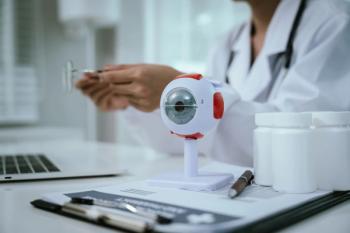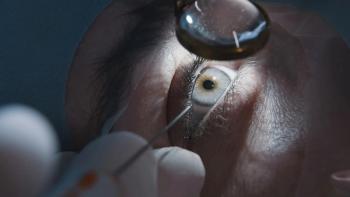
Findings shed new light on dry eyes in postmenopausal women
Results of a study demonstrated the efficacy of a droppable gel artificial tear product for improving signs and symptoms of dry eye disease in post-menopausal women and suggested it may be a particularly appropriate option for patients with non-meibomian gland-related, aqueous-deficient dry eye.
Boston-Results of a prospective, randomized, double-masked, controlled study demonstrated the efficacy of a droppable gel artificial tear product (Systane Ultra Lubricant Eye Drops, Alcon) for improving signs and symptoms of dry eye disease in postmenopausal women and suggested it may be a particularly appropriate option for patients with non-meibomian gland-related, aqueous-deficient dry eye, co-investigator Jillian F. Meadows, MS, reported at the annual meeting of the American Academy of Optometry.
Study subjects were randomized to receive either an artificial tear gel drop containing propylene glycol and polyethylene glycol or a control with no demulcents (soft contact lens rewetting drop; Sensitive Eyes Eye Drops, Bausch + Lomb). The patients were instructed to instill 1 to 2 drops in each eye Q.I.D. Follow-up visits were conducted after 2 and 4 weeks for assessment of changes in corneal staining and symptoms using the Ocular Surface Disease Index (OSDI).
To be eligible for inclusion in the study, women had to have a baseline sum corneal staining score of at least 3 in one eye and at least one of the following signs or symptoms: OSDI >12; Schirmer score ≤10 mm/5 minutes; tear breakup time (TBUT) <6 seconds; history of use of artificial tears; or a previous diagnosis of dry eye. Patients with Sjögren's syndrome, active infection or inflammation not associated with dry eye, or ocular allergy were excluded.
Thirty-nine women, 22 using the gel drop and 17 in the control group, completed the study. Outcomes analyses were performed for the entire study population and for two subgroups: women with aqueous deficiency, defined as Schirmer's ≤10 mm/5 minutes (22 patients); and women without meibomian gland dysfunction (MGD) based on having normal meibomian gland secretions (grade 0 or 1, 24 patients). The average age of women in the study was 62, and they were predominantly white.
Both groups showed improvement. While women who used the gel drop showed a numerically greater score than the control-2.13 versus 1.59-the difference was not statistically significant. However, subgroup analyses revealed statistically significant differences favoring the artificial tear gel drop in both subgroups at follow-up. The change in corneal staining score with the gel drop was especially notable for the women with aqueous-deficient dry eye, Meadows said.
Newsletter
Want more insights like this? Subscribe to Optometry Times and get clinical pearls and practice tips delivered straight to your inbox.





